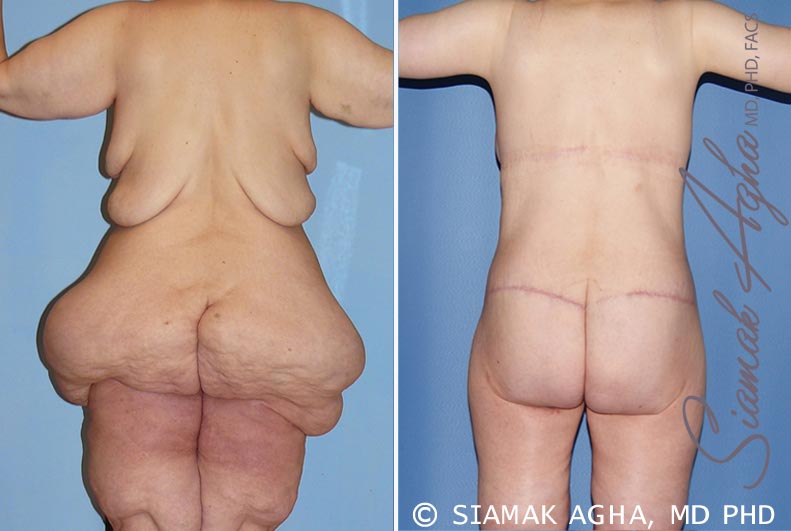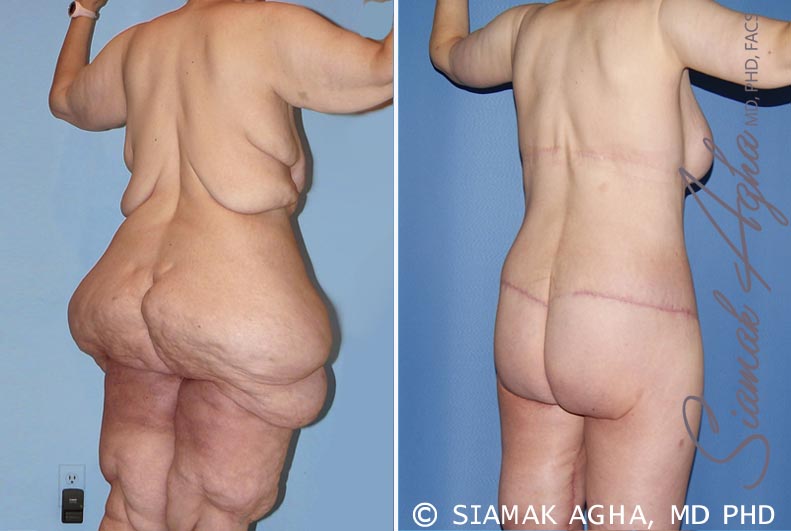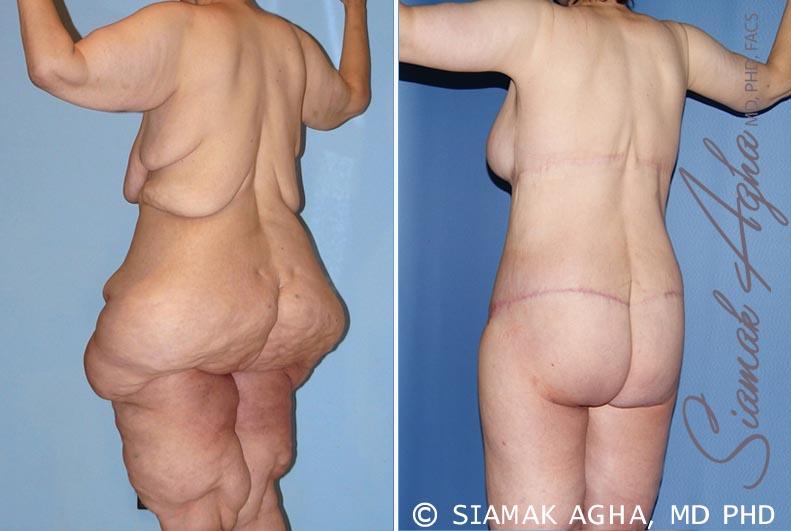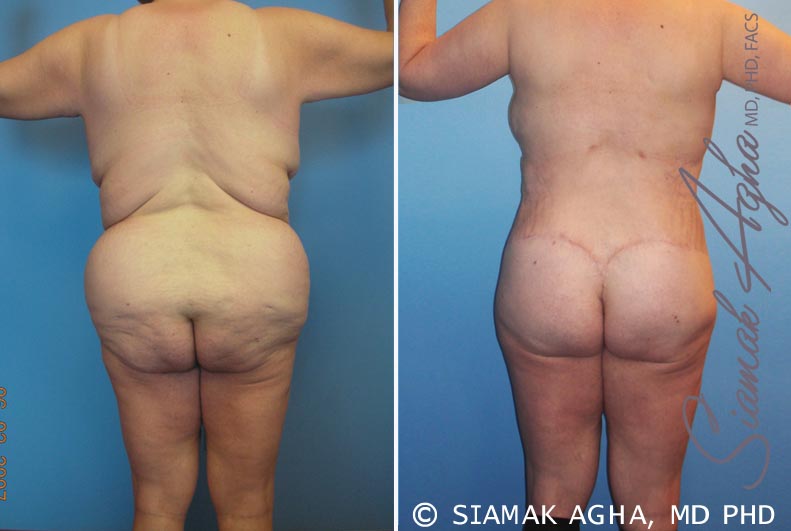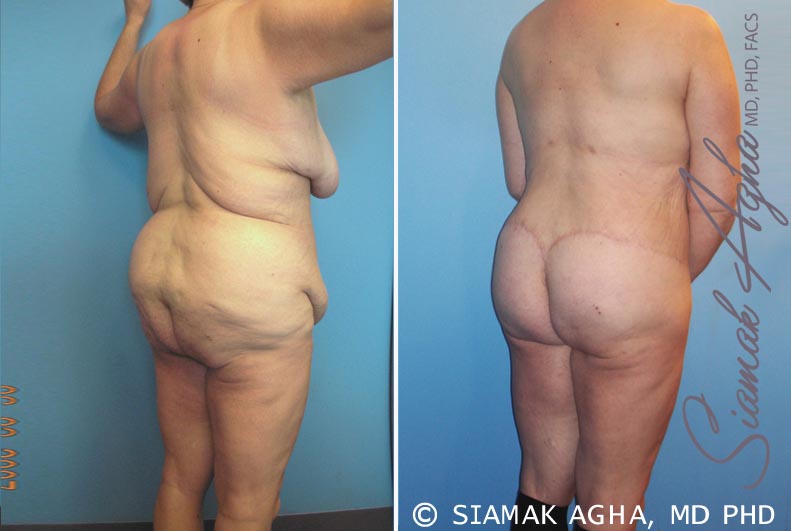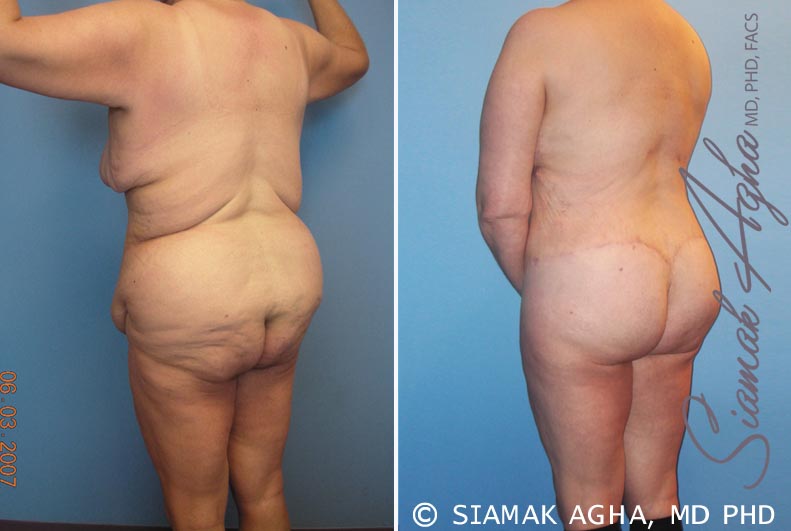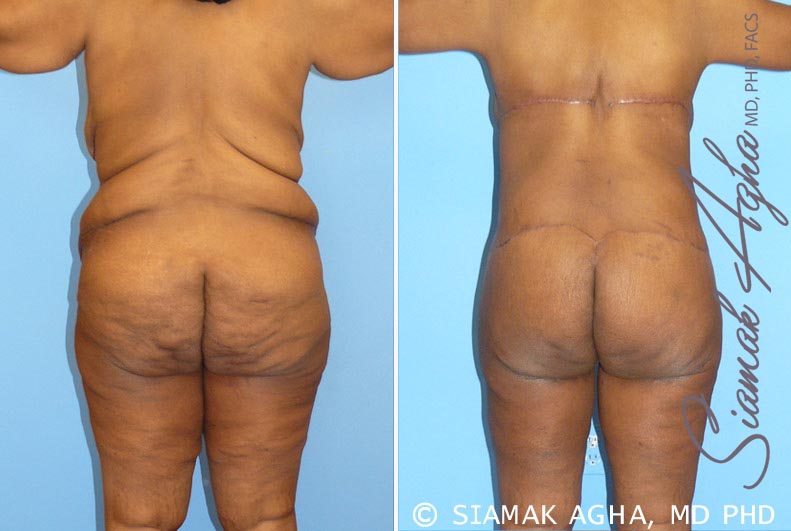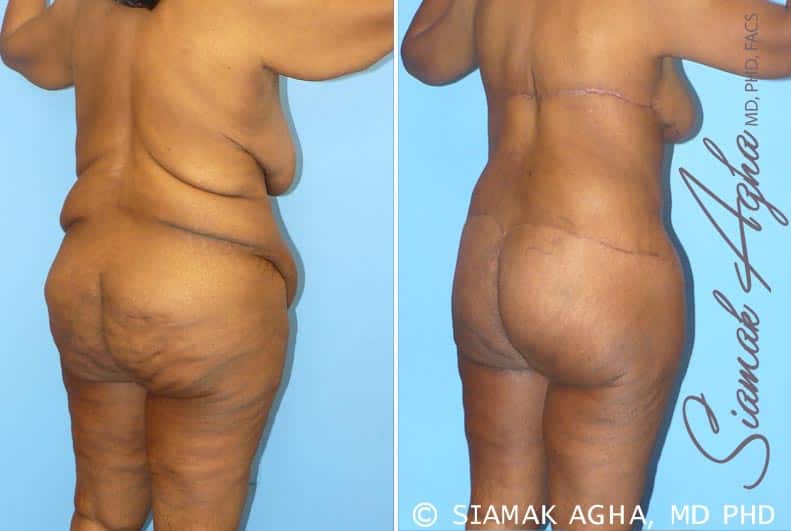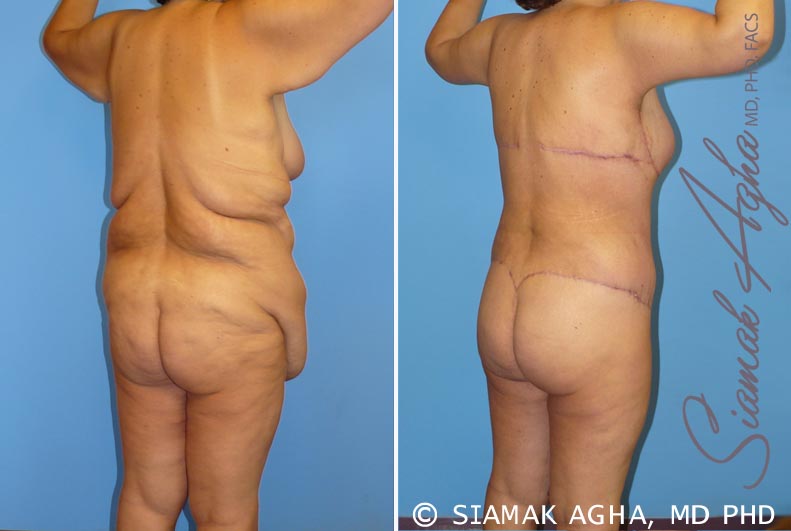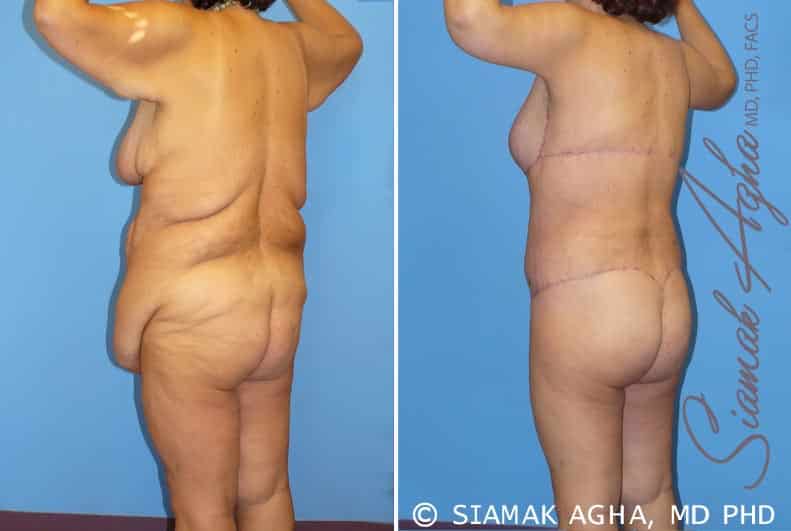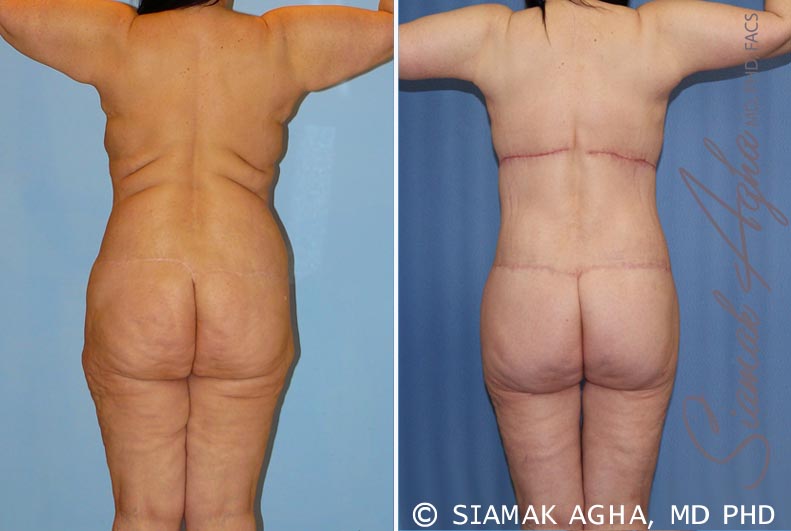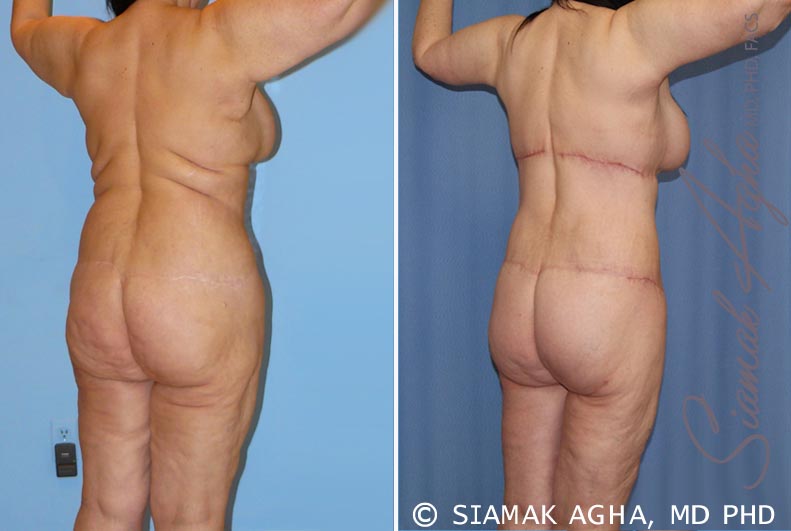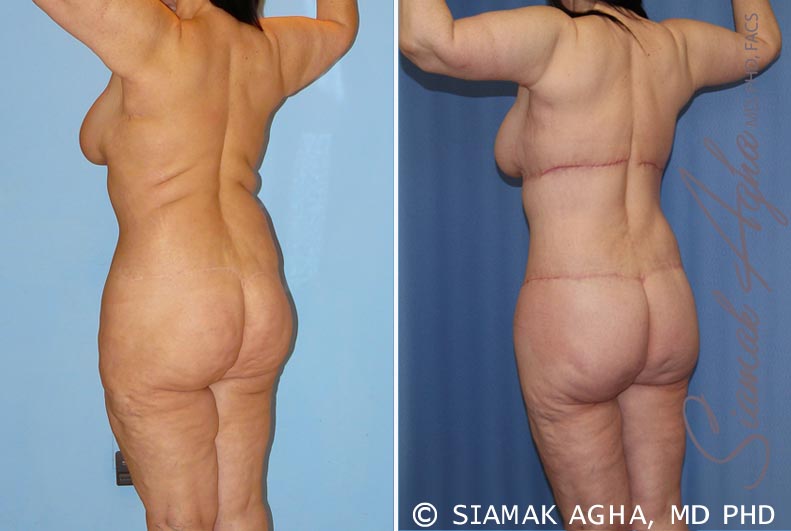BACK ENHANCEMENT
– BACK LAXITY AND ROLLS –The back refers to the area that extends from the neck at the top all the way to the upper buttocks below. It can be arbitrarily divided into 3 sections for the purpose of body contouring. The upper back starts at the neck and finishes above the bra-line. The midback is the region of the bra-line and the lower back is below the bra-line and above the upper buttocks. The division is important in understanding upper and lower body changes and is planning surgeries for each. Normally the upper back does not show much change after weight loss and most of the back issues are those of the mid or lower back rolls.
Significant weight loss often leaves behind extra, loose skin of the upper body; namely the chest and back. The upper body laxity can present in a vertical direction or circumferential direction. The vertical upper body laxity often presents as hanging tissue drapes extending from the rib cage in the front to the vertebral column in the back.
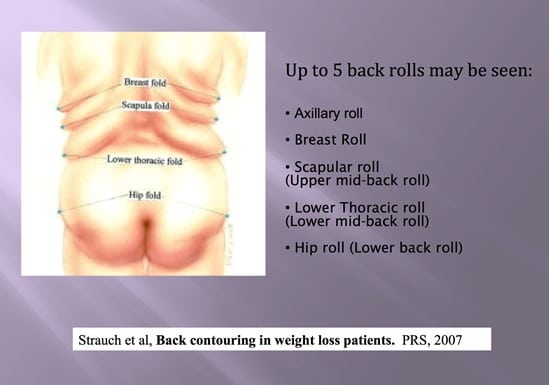
On the back, this extra skin often forms rolls on the upper, mid, and lower back. Up to 5 anatomical rolls were identified by Dr. Strauch in 2007. These are the upper axillary roll, the breast roll, two mid back rolls and a lower hip roll.
The breast roll extends from the breast tail over the chest towards the vertebral column. The midback laxity can present as one or two rolls (scapular roll and lower thoracic roll). The lower back roll (hip roll) spans horizontally over the lower back and upper buttock at the level of the waist and extends as the abdominal pannus in the front.
In a study of 100 patients, Dr. Agha looked at the propensity of each back roll, each anatomical location and distribution, as well as its frequency of occurrence.
Dr. Agha noted that about 20% of all weight loss patients will have minimal back skin laxity with no rolls. These patients will not need any form of upper body lift surgery.
About 70% of weight loss patients will have 2 to 3 back rolls. These are usually one or both midback rolls and the lower hip roll. Dr. Agha also noted that the midback rolls are the most frequently seen back rolls in his 100 patients. Furthermore, the midback rolls appeared to consistently be seen in patients who had one or more rolls, indicating that the midback rolls appeared as one of the first back rolls.
About, 10% of weight loss patients will have all the 5 different back rolls. In this population of patients, both upper and lower body lift surgeries are needed to correct for both the upper back and lower back skin excess and rolls.
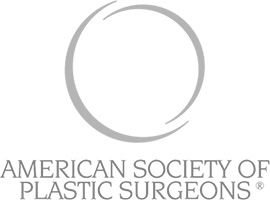
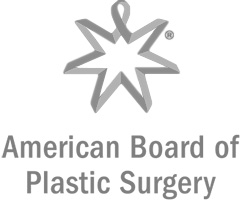

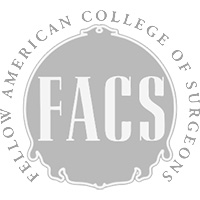
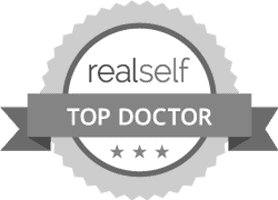
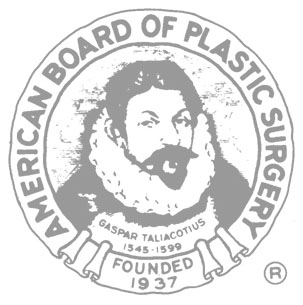
Upper Body Lift Surgery
An upper body lift surgery defines any procedure that removes excess rolls of skin from the upper and midback (vertical laxity), lower chest (vertical laxity), and hanging tissue of the outer chest (circumferential laxity), leaving the patient with a smoother upper body and narrower chest. Depending on whether you have back rolls, outer chest tissue excess, or lower chest/upper abdominal rolls, Dr. Agha performs three different types of upper body lift procedure: (A) The bra-line (or transverse) upper body lift corrects for vertical laxity of the back and outer chest. (B) The reverse tummy tuck corrects for the lower chest/upper abdominal rolls. (C) The J-upper body lift corrects for circumferential or horizontal laxity of the chest.
Bra-line or Transverse Upper Body Lift
The bra-line upper body lift is designed for correction of vertical laxity of the back. The procedure utilizes 2 horizontal incisions on your back to remove a band of back tissue from one outer chest to the other. The excision removes back skin and underlying fat without cutting into or damaging the back muscles. Once the excess skin and tissue are excised, the incisions are brought together and closed with suture. Dr. Agha uses three layers of suturing to close the incision. Dr. Agha’s experience allows him to end up with a final incision at the level of the bra, as a perfectly placed and symmetrical incision that can be covered with a bra. Although the bra-line upper body lift is called an upper body lift, it is only a back lift procedure and offers no chest correction.
Reverse Tummy Tuck
When patients have chest laxity, they often present with lower chest/ upper abdominal roll and outer chest circumferential laxity – similar to flank excess of the abdomen. In females the breasts will also deflate and sag. Correction of breast sagging and lower chest roll will often require a breast lift and a reverse tummy tuck, respectively. To get the best results, Dr. Agha merges the markings of the bra-line upper body lift over the outer chest into the markings of the reverse tummy tuck and the breast lift. In that manner, perfectly placed incisions will run from the back to the front. Furthermore, a larger section of the back rolls is removed from the back and continued on the front as a reverse abdominoplasty. The bra-line upper body lift is a versatile procedure that produces a tight and flat back contour.
J-Upper Body Lift
The J-upper body lift was popularized by Drs. Agha and Hurwitz in 2007. This procedure utilizes a vertical incision on the side of the chest in order to remove excess chest side tissue. In this manner, circumferential (horizontal) chest laxity can be reduced through a vertical incision that starts at the arm pit and ends at the mammary crease; similar to the letter J in shape.
The procedure utilizes 2 perfectly planned vertical incisions on your outer chest to remove a segment of outer chest skin and underlying fat without cutting into the underlying muscles. Once the excess skin and tissue are excised, the back tissue is advanced forward as far as the breast tail. At this position, Dr. Agha anchors the back tissue using permanent sutures. This is a paramount step that is necessary in order to avoid widening of the J-upper body lift incision. The incisions are brought together and closed with suture.
By itself, the J-upper body lift is enough in correcting mild back laxity. However, for more severe cases, a bra-line upper body lift is the mainstay approach for correction of upper back laxity.
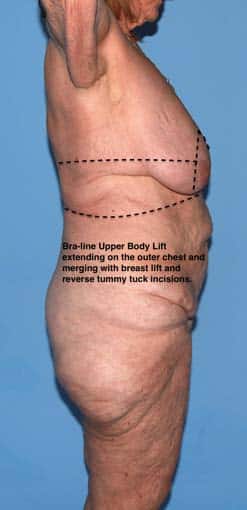
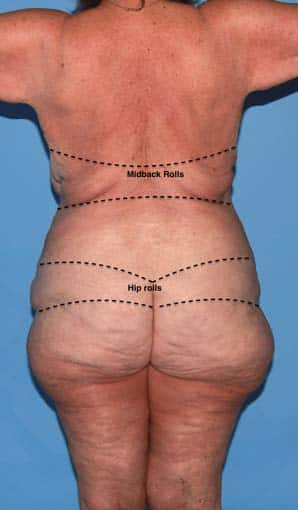
Combining Transverse and J-Upper Body Lifts
For those patients who have significant laxity of the chest and back in both a vertical as well as horizontal dimension, both the bra-line and J- upper body lifts are needed in order to tighten the upper chest (reduce chest circumference) and smoothen the back. In addition, a reverse tummy tuck may be needed in order to excise the lower chest roll.
Dr. Agha typically performs an L-brachioplasty, J-upper body lift, bra-line upper body lift and breast reshaping in 8.5 hours as an outpatient surgery. This allows the patient to recover in the comfort of their own home, provided they have adequate support. Recovery from upper body lift surgery can take several weeks but like all body contouring procedures, final results may take several months to achieve.
Upper Body Lift Surgery
If the bra-line upper body lift or the J-upper body lift is the only procedure the patient is having, the duration of the surgery is typically about 3 hours for each. All upper body contouring surgeries are done as same day surgery, letting the patient return home for recovery the same day.
Upper Body Lift Surgery Recovery
The recovery period after an upper body lift generally takes about 3 to 4 weeks. During this period, we prefer to have your incisions dressed with a surgical pad, and your chest wrapped in Ace bandages.
Upper Body Lift Results
Upper body lift surgeries result in the elimination of mid back rolls and outer chest sagging tissue and result in a smoother and smaller chest appearance. As with other body contouring procedures, the complete benefits of an upper body lift may take 3+ months to appreciate. This is because time is needed for all of your incisions to heal and swelling to subside.
The final outcome of an upper body lift is dependent on multiple factors which can be broken down to three major elements.
1) Optimal Healing: As with any body contouring surgery, the final results of the surgery is ½ dependent on your surgeon and ½ dependent on optimal healing.
2) Skin quality: If the back and chest skin is robust and not damaged, the upper body lift results persist for years to come. However, if the skin quality is poor due to cycles of weight gain and loss, stretch marks, dermal damage, e.t.c., then the skin stretches gradually after the upper body lift procedure and result in about 20% relaxation at about 4 to 6 months.
3) Weight gain or loss: Although the results of the upper body lift procedure are considered permanent, weight fluctuations after surgery can adversely affect your results. If patients lose additional weight of 20 pounds or more after an upper body lift, they may develop more skin laxity after the procedure. Furthermore, significant weight gain can adversely misshapen the fat distribution.

